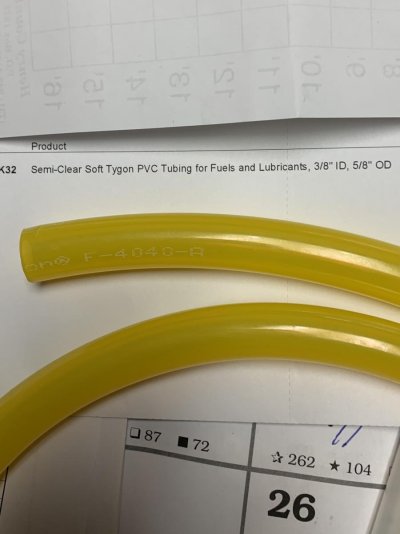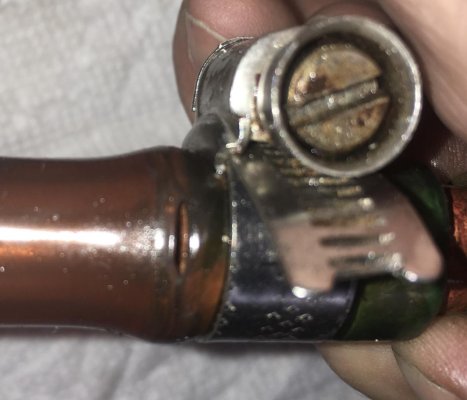Pack Mule
TF Site Team
- Joined
- Jan 24, 2013
- Messages
- 3,749
- Location
- USA
- Vessel Name
- Slo-Poke
- Vessel Make
- Jorgensen custom 44
I have two 62 gallon fuel tanks on my starboard side in engine room. They are plumbed together with valves to one sight tube. The top of sight tube is tied in at the top of one fuel tank in the same plumbing as my return line. I know it’s funky right?
There is a valve at the bottom of site tube. After shutting engine off it takes at least overnight for the fuel to reach what I think is the right level in sight tube. It does this even if I shut all the valves for the sight tube while running. As soon as I shut engine off and open valves to sight tube all fuel is sucked out of sight tube and takes what seems like forever to fill the tube back up.
Is there anything I can do to speed this up , short of adding a separate bulkhead in tank for the top of sight tube? I’m guessing it’s taking so long because air trapped in top of sight tube .
There is a valve at the bottom of site tube. After shutting engine off it takes at least overnight for the fuel to reach what I think is the right level in sight tube. It does this even if I shut all the valves for the sight tube while running. As soon as I shut engine off and open valves to sight tube all fuel is sucked out of sight tube and takes what seems like forever to fill the tube back up.
Is there anything I can do to speed this up , short of adding a separate bulkhead in tank for the top of sight tube? I’m guessing it’s taking so long because air trapped in top of sight tube .
Last edited:






